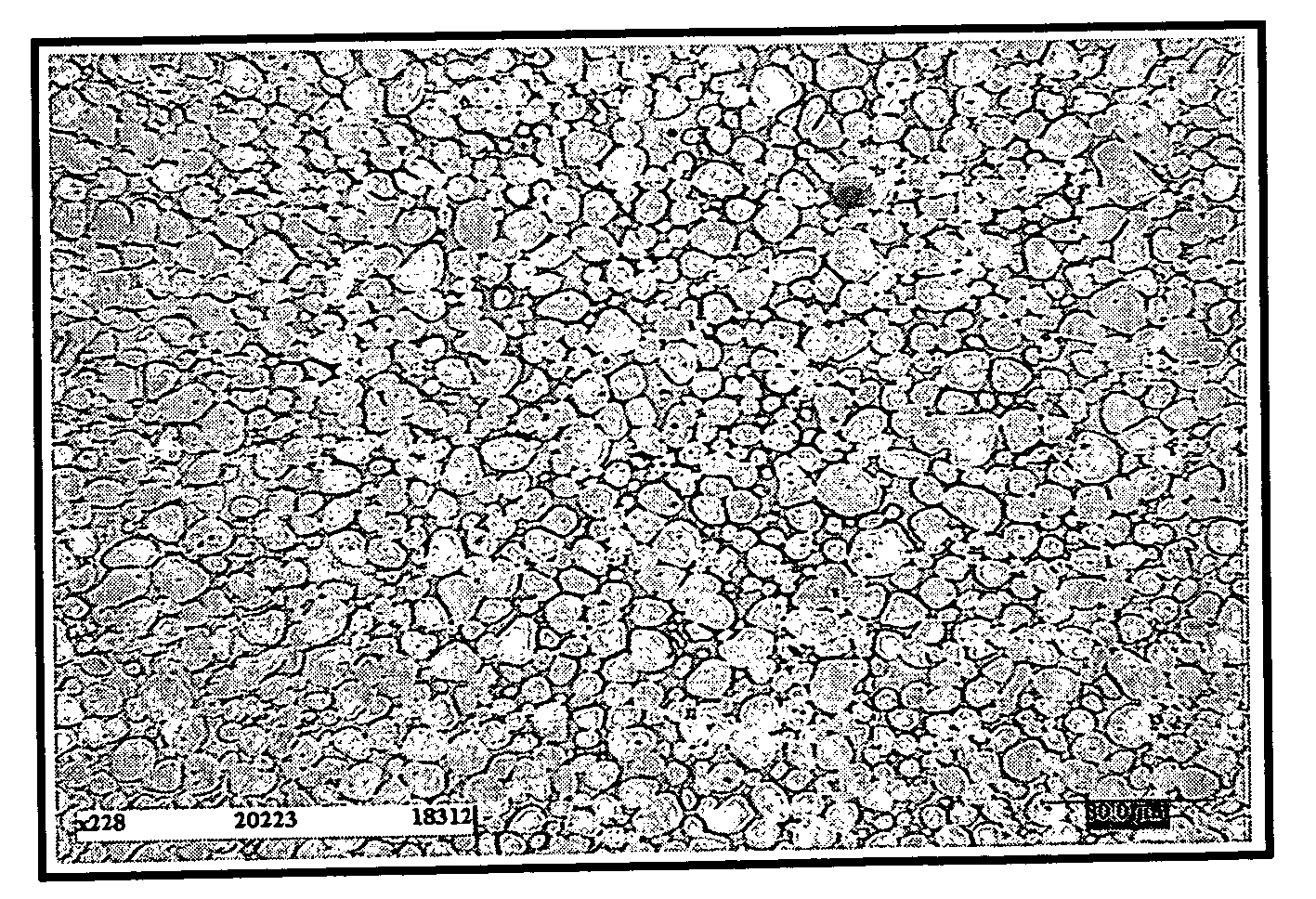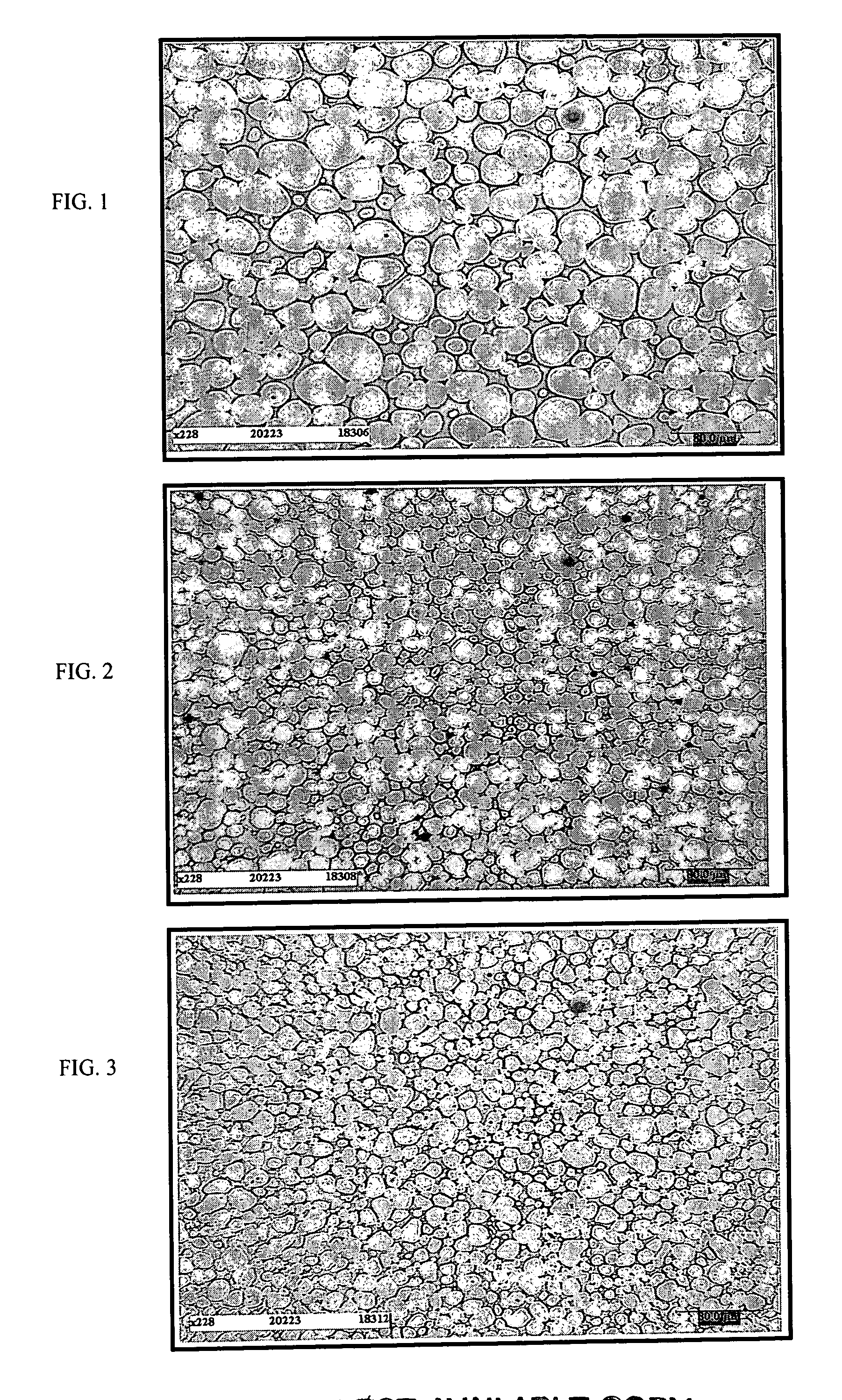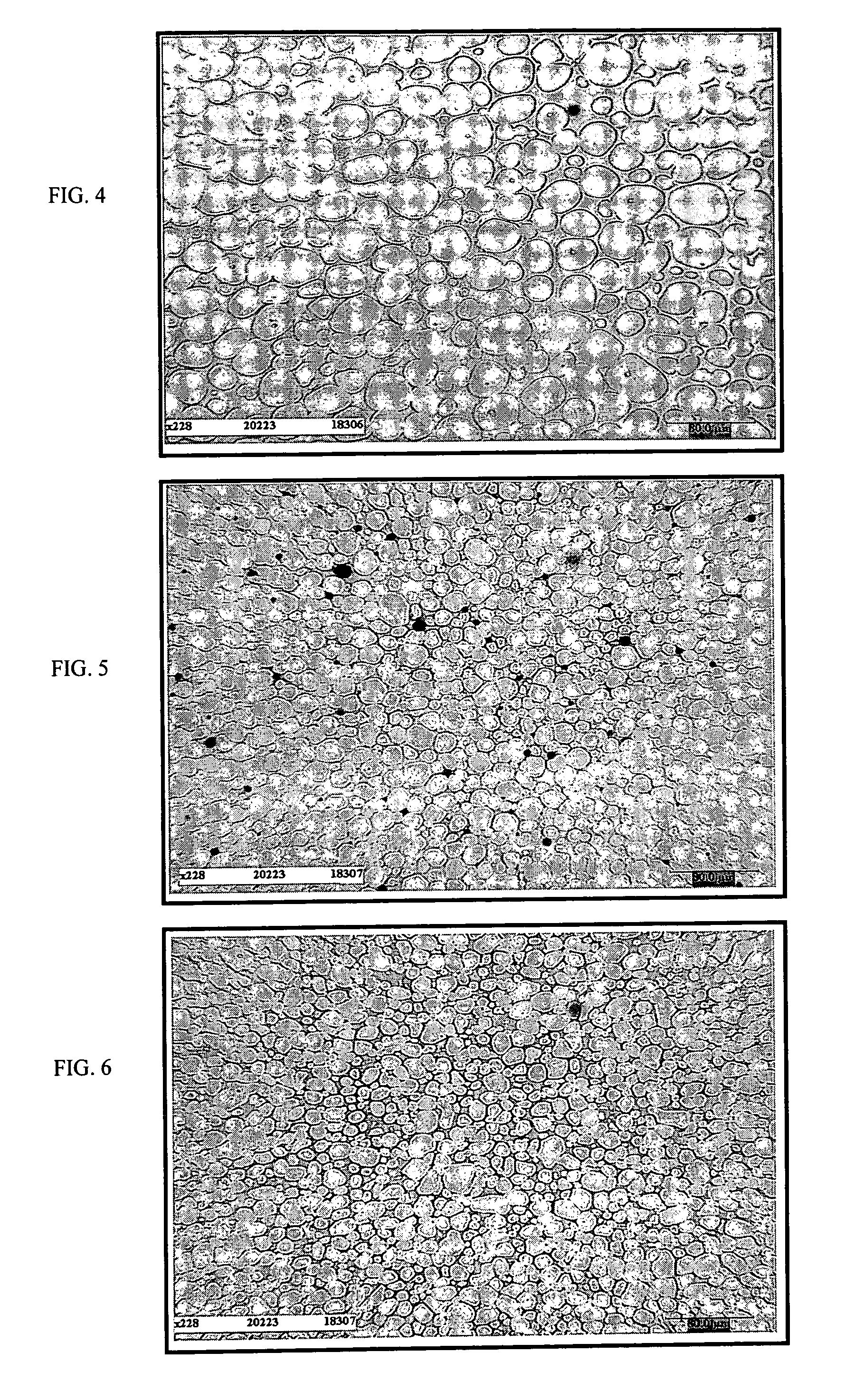High-powder tungsten-based sintered alloy
a technology of tungsten-based alloys and high-powder, which is applied in the direction of ammunition projectiles, transportation and packaging, weapons, etc., can solve the problems of fine porosities and the small market share of tungsten-based alloys
- Summary
- Abstract
- Description
- Claims
- Application Information
AI Technical Summary
Benefits of technology
Problems solved by technology
Method used
Image
Examples
example 1
[0058] A bar is prepared from a W—Ni—Fe—Co alloy having the following composition in mass: tungsten 93%, nickel 4.05%, iron 1% and cobalt 1.95% which is then subjected to the sintering operation according to the invention: [0059] density 17.6 [0060] geometry: cylinder Ø 10, L=90 mm, [0061] compression: 2.108 Pa [0062] sintering by induction in N2, [0063] time to reach T max 1500° C.: [0064] temperature build-up rate: δT / δt˜300° C. / mn, [0065] time at 1500° C. stage: 3 mn (sintering time at liquid phase:
[0066] The following characteristics are obtained: [0067] relative density: 100% (theoretical d: 17.79) [0068] porosity: none
[0069] On a microstructural level, we observe: [0070] In FIG. 1, we see a bar having the same composition but sintered according to prior art which has the following characteristics: Vα=84.8%, Lα=20.1 μm, Cαα(%)=22.3%, λγ=3.6 μm. [0071] In FIG. 2, which shows the micrograph of the material without any previous reduction processing, the material according to the...
example 2
[0075] A bar is prepared from a W—Ni—Fe—Co alloy (91, 6.2, 0.3, 2.5%) having a density of 17.1 by processing in the liquid phase according to the invention as explained previously: [0076] geometry: cylinder ø 10, L=90, [0077] compression: 2.108 Pa [0078] sintering by induction in N2 in the liquid phase, [0079] time to reach T max 1500° C.: [0080] temperature build-up rate: δT / δt˜400° C. / mn, [0081] time at 1500° C. stage: 3 mn (sintering time at liquid phase:
[0082] The following results are obtained: [0083] relative density: 100% (theoretical d: 17.45) [0084] porosity: none
[0085] On a microstructural level, we observe: [0086] In FIG. 4, we see a bar having the same composition but sintered according to prior art which has the following characteristics: Vα=80.2%, Lα=20.0 μm, Cαα(%)=15%, λγ=4.9 μm. [0087] In FIG. 5, which shows the micrograph of the material without any previous reduction processing, the material according to the invention and according to example 2 has the following...
example 3
[0091] A bar is prepared from a W—Ni—Co alloy (91, 6, 3%) having a density of 17.5 by processing in the liquid phase according to the invention as explained previously: [0092] geometry: cylinder ø 10, L=90, [0093] compression: 2.108 Pa [0094] sintering by induction in N2, [0095] time to reach T max 1500° C.: [0096] temperature build-up rate: δT / δt˜300° C. / mn, [0097] time at 1530° C. stage: 3 mn (sintering time at liquid phase: [0098] relative density: 100% (theoretical d: 17.45) [0099] porosity: none
[0100] On a microstructural level, we observe: [0101] In FIG. 7, we see a bar having the same composition but sintered according to prior art which has the following characteristics: Vα=78%, Lα=19 μm, Cαα(%)=17.8%, λγ=5.4 μm. [0102] In FIG. 8, which shows the micrograph of the material without any previous reduction processing, the material according to the invention and according to example 3 has the following characteristics: Vα=76.7%, Lα=8.2 μm, Cαα(%)=11.3%, λγ=2.5 μm. [0103] In FIG...
PUM
| Property | Measurement | Unit |
|---|---|---|
| Temperature | aaaaa | aaaaa |
| Temperature | aaaaa | aaaaa |
| Temperature | aaaaa | aaaaa |
Abstract
Description
Claims
Application Information
 Login to View More
Login to View More - R&D
- Intellectual Property
- Life Sciences
- Materials
- Tech Scout
- Unparalleled Data Quality
- Higher Quality Content
- 60% Fewer Hallucinations
Browse by: Latest US Patents, China's latest patents, Technical Efficacy Thesaurus, Application Domain, Technology Topic, Popular Technical Reports.
© 2025 PatSnap. All rights reserved.Legal|Privacy policy|Modern Slavery Act Transparency Statement|Sitemap|About US| Contact US: help@patsnap.com



